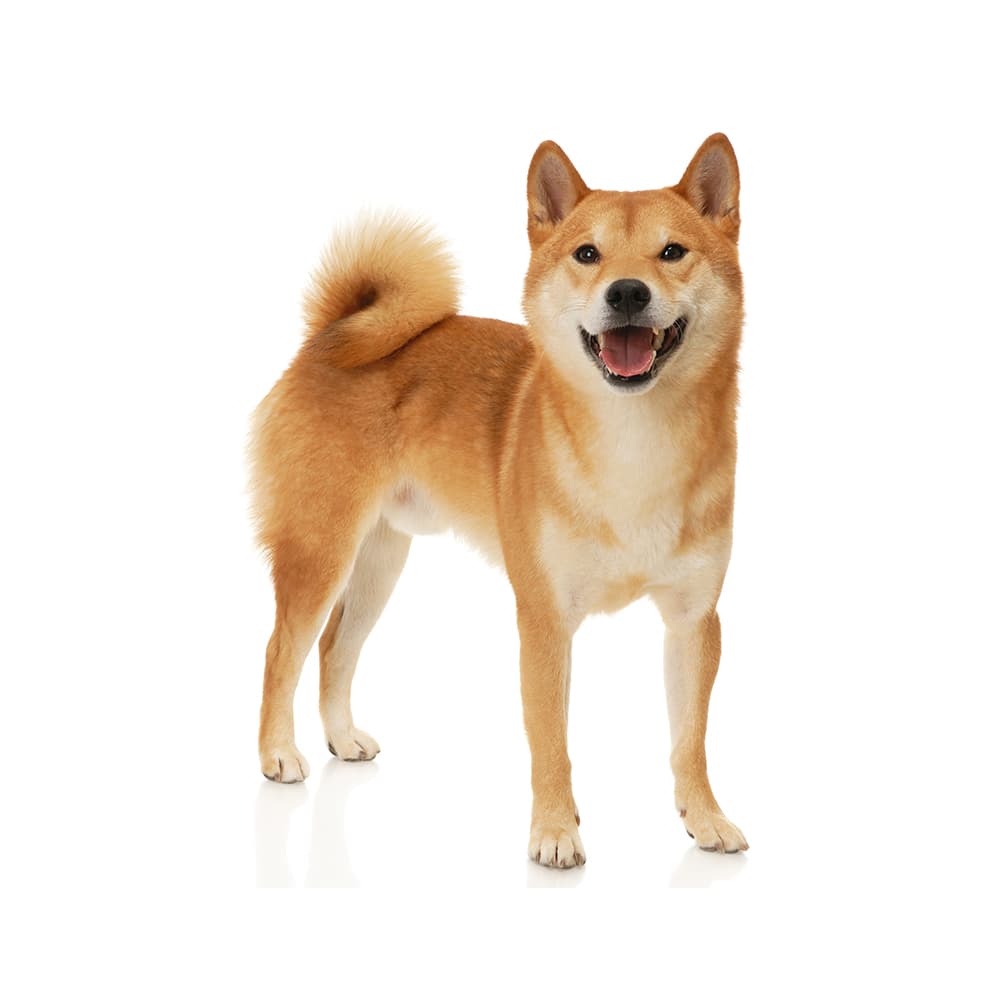Discover your dog's connection to this breed and 200+ others


Discover your dog's connection to this breed and 200+ others



The Shiba Inu is a small to medium-sized breed of dog that originates from Japan. In Japanese, Shiba means brushwood, referring to the dog's hunting in the wild brush, and Inu means dog. It is also believed that the name may allude to the breed's reddish color which resembles that of the brushwood leaves in the fall. The Shiba Inu is one of the six original and distinct spitz breeds of dog from Japan, and it is the smallest and oldest among them. The breed's history dates back to 300 B.C. when it was used primarily as a hunting dog in the mountainous regions of the country. They were used to hunt small game and birds, and occasionally larger game like wild boar. During World War II, the breed nearly went extinct due to food shortages and a distemper epidemic. The Shiba Inu breed as we know it today was mainly established through three surviving bloodlines: the San In Shiba, the Mino Shiba, and the Shinshu Shiba.
Shiba Inus can suffer from degenerative myelopathy, glaucoma, cataracts, and progressive rod-cone degeneration. They can also suffer from hip dysplasia, patellar luxation, and allergies. A specific hereditary condition for which they should be tested is GM1 gangliosidosis, a progressive nerve disease that is eventually lethal by 18 months.
Shiba Inus are known for their spirited and good-natured personality. They are intelligent, agile, and strong-willed. Often described as 'cat-like', they can be aloof, independent, and a little hard to train. Despite their size, they make excellent watchdogs and are often reserved around strangers but typically form strong bonds with their families. Shibas can be aggressive toward other dogs, especially those of the same sex, and their hunting instinct may cause them to chase small animals.
A canine genetic lineage is a group of individuals or entire breeds that descended from common ancestors predating modern breed formation. Often these lineages are associated with a ‘type’ of dog with a unique historical working role and associated behaviors (e.g., herding, scent hunting, etc.).
Spitz and Sled Dogs originate in the Arctic and subarctic regions which caused them the develop adaptations to cold climates. Some of these adaptations give rise to characteristics of the lineage, most notably a dense double coat that helps with insulation. The lineage of these dogs can be followed back to ancient breeds developed by Indigenous people. These ancient breeds were used as an aid for transportation, herding, guarding, and hunting. These jobs have created dogs that are independent, intelligent and have strong work ethics as well as a sturdy body that helps them to pull sleds or go on long journeys over rough terrain.
Example breeds with ancestry from this lineage include Akita, Chow Chow, and Siberian Husky.
They are the oldest and smallest of Japan's dogs.
The Shiba Inu has been designated a national treasure of Japan, reflecting the breed's historical and cultural significance in the country.
The Shiba Inu was popularized in Western culture through various internet memes, most notably the 'Doge' meme, which features a picture of a Shiba Inu with various captions written in broken English.
They have a unique vocalization, often referred to as the 'Shiba scream', which is a loud and high-pitched noise they make when they are extremely happy or stressed.
https://vgl.ucdavis.edu/test/gm1-shiba-inu
https://www.akc.org/dog-breeds/shiba-inu
https://www.fci.be/en/nomenclature/SHIBA-257.html
https://www.ukcdogs.com/shiba
Recommended by top vets with decades of experience
21 breeds
64 genetic health markers
50 genetic trait markers
